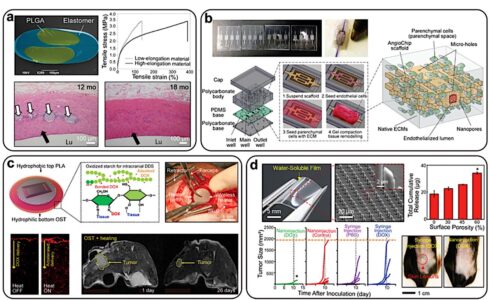Many innovative technological and engineering ideas have great potential but are unlikely to be developed in the next decade. Here, we explore ten such viable yet improbable concepts. While these nine breakthrough ideas hold the promise of transformative advancements, their development faces significant scientific, ethical, and practical challenges
1. Quantum Computing for Everyday Use
Quantum computing promises to revolutionize various fields, from cryptography to complex simulations. However, it faces several obstacles:
- Stability issues: Quantum computers are highly sensitive to environmental disturbances, making it difficult to maintain stable operations (Source: Nature).
- Error correction: Effective quantum error correction is still in its infancy, posing a significant challenge for reliable computing (Source: MIT Technology Review).
- Practical implementation: Integrating quantum computing into everyday applications requires substantial advancements and investments (Source: IEEE Spectrum).
2. Space-Based Solar Power
Harvesting solar energy from space could provide a consistent and powerful source of renewable energy. However, the concept faces several barriers:
- High costs: The expense of launching and maintaining solar arrays in orbit is prohibitively high (Source: Scientific American).
- Technical complexity: Transmitting collected energy back to Earth involves complex technology that is not yet fully developed (Source: National Renewable Energy Laboratory).
- Maintenance challenges: Space-based infrastructure requires robust maintenance capabilities, which are currently limited (Source: Space.com).
3. Fully Autonomous Flying Cars
Flying cars have long been a symbol of futuristic transportation. While prototypes exist, achieving widespread deployment faces several challenges:
- Regulatory hurdles: Developing regulations for air traffic and safety is a complex process that is not yet resolved (Source: Federal Aviation Administration).
- Safety concerns: Ensuring the safety of autonomous flying vehicles is a significant technological challenge (Source: Wired).
- Navigation systems: Reliable autonomous navigation systems for flying cars are still under development (Source: The Verge).
4. Universal Vaccines
The concept of a universal vaccine that protects against multiple strains of viruses, including influenza and coronaviruses, is highly appealing. However, several challenges exist:
- Immune system complexity: The human immune system is complex, making it difficult to develop a one-size-fits-all solution (Source: Journal of Immunology).
- Virus mutation rates: Rapid mutation rates of viruses complicate the development of universal vaccines (Source: Nature Reviews Microbiology).
- Scientific hurdles: Significant scientific breakthroughs are needed to achieve universal vaccine efficacy (Source: Science Magazine).
5. Nanotechnology in Medicine
Nanotechnology has the potential to revolutionize medicine by enabling targeted drug delivery, tissue regeneration, and precise diagnostics. Yet, several obstacles delay its widespread adoption:
- Regulatory approval: The approval process for nanotechnology in medicine is lengthy and complex (Source: FDA).
- Safety concerns: Extensive research into the safety and efficacy of nanotechnology is required (Source: National Institutes of Health).
- Research funding: Significant funding is needed to advance nanotechnological applications in medicine (Source: World Health Organization).
6. Fusion Energy
Fusion energy promises a virtually limitless and clean power source by mimicking the processes powering the sun. Although experimental reactors have shown progress, several challenges remain:
- Extreme conditions: Sustaining the extreme conditions required for fusion reactions is a significant engineering challenge (Source: International Atomic Energy Agency).
- Commercial viability: Achieving commercially viable fusion energy production is still a distant goal (Source: ITER).
- Technological advancements: Continuous advancements in technology are necessary to overcome existing barriers (Source: MIT Plasma Science and Fusion Center).
7. Brain-Computer Interfaces (BCIs) for Mental Enhancement
BCIs hold the potential to enhance cognitive abilities, memory retention, and even telepathy-like communication. However, several factors hinder their development:
- Ethical concerns: The ethical implications of BCIs for mental enhancement are complex and unresolved (Source: Nature Neuroscience).
- Health risks: Potential health risks associated with BCIs require thorough investigation (Source: Journal of Neural Engineering).
- Integration challenges: Safely integrating BCIs into the human brain is a significant technological hurdle (Source: IEEE Transactions on Neural Systems and Rehabilitation Engineering).
8. Climate Engineering
Climate engineering, or geoengineering, aims to mitigate climate change by altering the Earth’s environment. While theoretically viable, several barriers exist:
- Unintended consequences: The potential unintended consequences of large-scale climate engineering are not fully understood (Source: Environmental Research Letters).
- Geopolitical implications: Implementing climate engineering on a global scale involves complex geopolitical considerations (Source: Nature Climate Change).
- Scientific uncertainties: Significant scientific uncertainties remain regarding the efficacy and safety of climate engineering techniques (Source: Geophysical Research Letters).
9. Genetic Editing for Human Enhancement
CRISPR and other genetic editing technologies offer the possibility of enhancing human traits, such as intelligence, physical strength, and disease resistance. However, several challenges exist:
- Ethical dilemmas: Genetic editing for human enhancement raises numerous ethical issues (Source: CRISPR Journal).
- Safety concerns: Ensuring the safety of genetic editing procedures is a significant scientific challenge (Source: Journal of Medical Ethics).
- Regulatory frameworks: Rigorous regulatory frameworks are needed to oversee the development and application of genetic editing (Source: National Academy of Sciences).

































